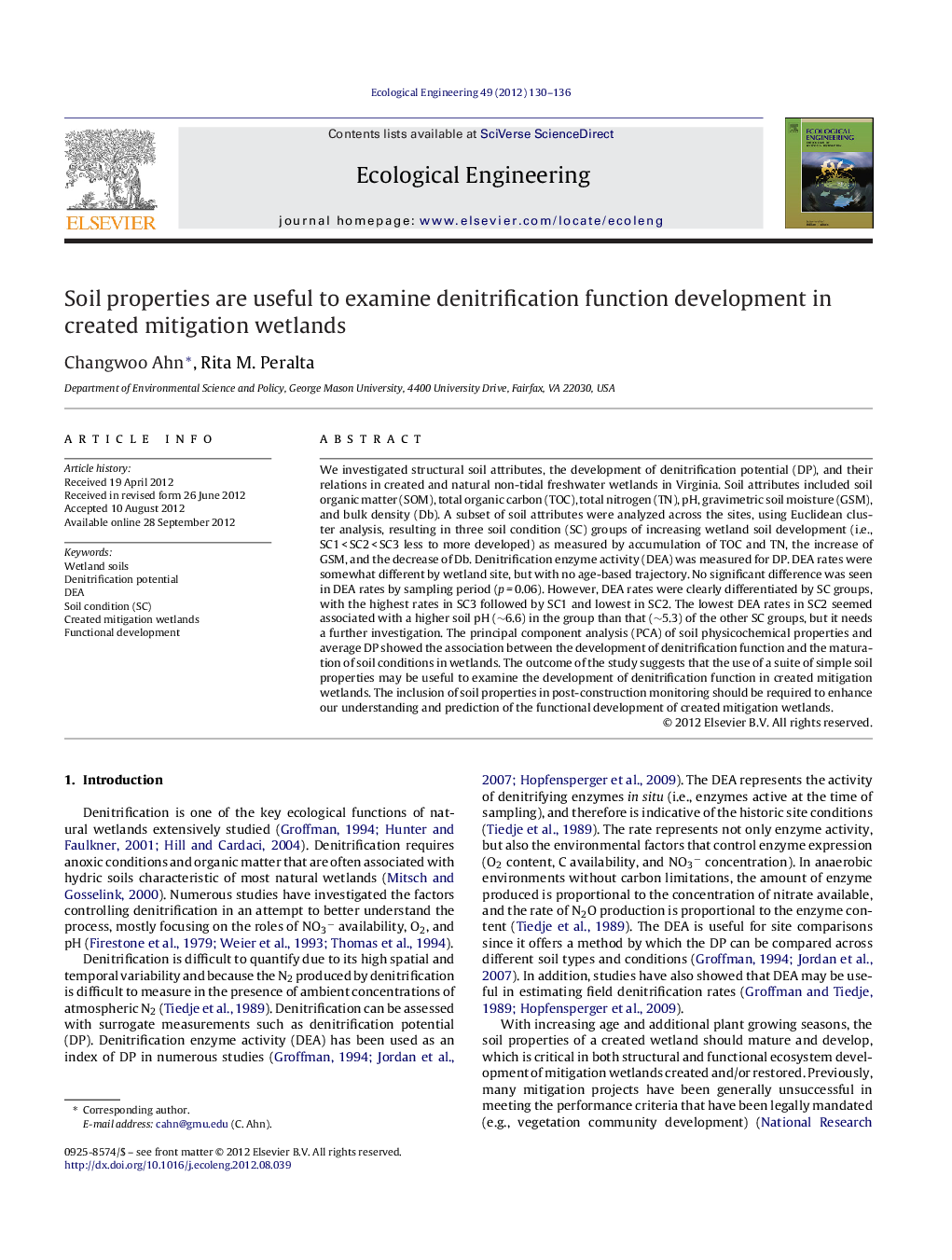| Article ID | Journal | Published Year | Pages | File Type |
|---|---|---|---|---|
| 4389895 | Ecological Engineering | 2012 | 7 Pages |
We investigated structural soil attributes, the development of denitrification potential (DP), and their relations in created and natural non-tidal freshwater wetlands in Virginia. Soil attributes included soil organic matter (SOM), total organic carbon (TOC), total nitrogen (TN), pH, gravimetric soil moisture (GSM), and bulk density (Db). A subset of soil attributes were analyzed across the sites, using Euclidean cluster analysis, resulting in three soil condition (SC) groups of increasing wetland soil development (i.e., SC1 < SC2 < SC3 less to more developed) as measured by accumulation of TOC and TN, the increase of GSM, and the decrease of Db. Denitrification enzyme activity (DEA) was measured for DP. DEA rates were somewhat different by wetland site, but with no age-based trajectory. No significant difference was seen in DEA rates by sampling period (p = 0.06). However, DEA rates were clearly differentiated by SC groups, with the highest rates in SC3 followed by SC1 and lowest in SC2. The lowest DEA rates in SC2 seemed associated with a higher soil pH (∼6.6) in the group than that (∼5.3) of the other SC groups, but it needs a further investigation. The principal component analysis (PCA) of soil physicochemical properties and average DP showed the association between the development of denitrification function and the maturation of soil conditions in wetlands. The outcome of the study suggests that the use of a suite of simple soil properties may be useful to examine the development of denitrification function in created mitigation wetlands. The inclusion of soil properties in post-construction monitoring should be required to enhance our understanding and prediction of the functional development of created mitigation wetlands.
